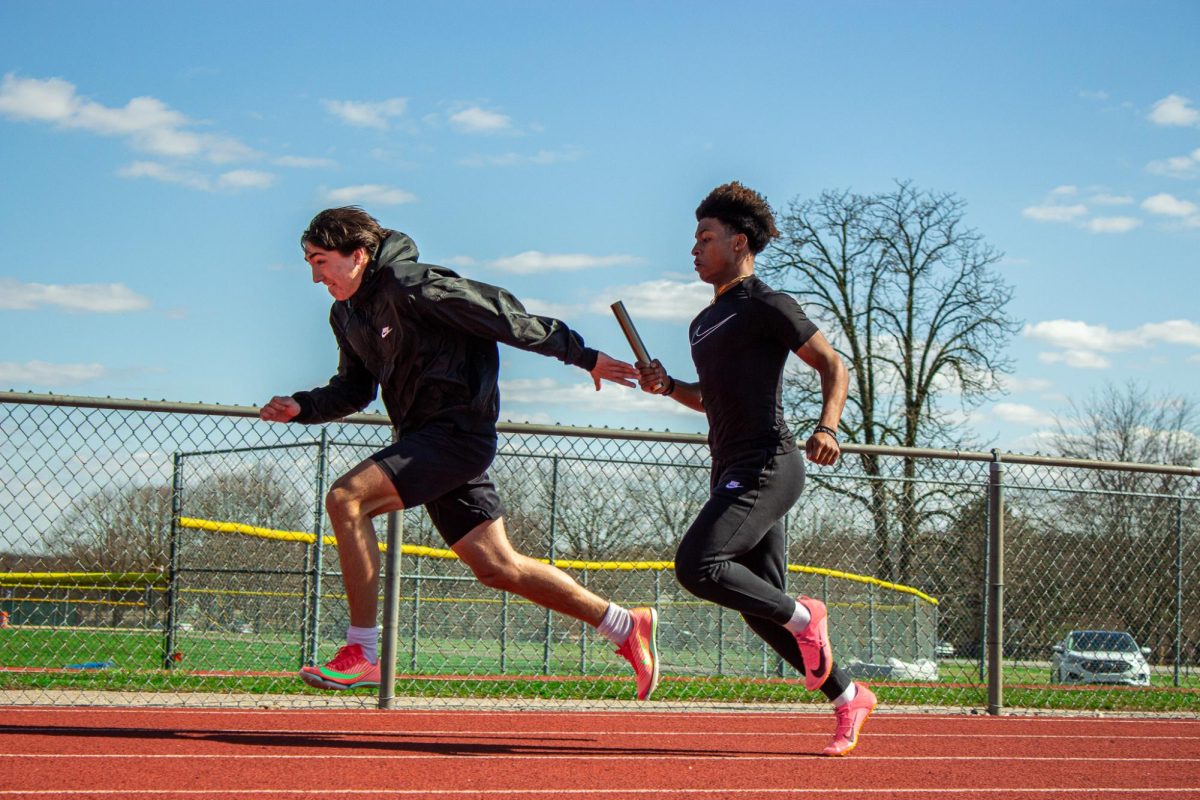Trekking the road to the State Championships, figure skaters fulfill dreams ignited at a young age. They carry a history of moments that make a skater; taking only a few minutes to spark their ambition.
“I watched this other girl, [and she had] a really pretty sparkly, glittery, flouncy dress and I was like, this is it,” senior and Ann Arbor figure skating team captain Elise Meints said.
The Ann Arbor United Figure Skating team, including skaters from all four AAPS high schools, breezed its way to the State Championship. The team returned with a fourth and seventh place title in the team events.
“States is the biggest highschool competition of the year, with the top twelve teams in the state participating,” sophomore Victoria Wilknson said.
During the State Championships, skaters compete in individual events, scored by judges. Individual points then add up to a team score.
Reaching these feats bloom from immense amounts of pressure on the individual. Building up to the competition, skaters undergo a rigorous schedule.
“We practice at 6:30 a.m. before school twice a week leading up to states,” Wilkins said. “I practice up to 25 hours a week, wake up at 4:30 a.m. in the morning to skate before school, and have done an uncountable amount of ‘school sandwiches,’ my mom and I’s nickname for skating before and after school.”
This level of dedication to figure skating provides more than enough of its own challenges.
“Preparing for competitions with this event is whenever I move up a level my coach has to change jumps and spins to make them harder,” freshman Rebekah Muthyala said. “A 2-minute 30-second program gets really tiring so it’s so important to build up stamina.”
Skaters are also not exempt from typical athletic anxiety about expectations, injury and performance.
“You have to be that precise and that good,” Meints said. “It takes a lot. We have a lot of just general team frustration because people fall over and then we also have somebody tear their ACL.”
Because of the sport’s dangerous nature,the smallest details can make or break a practice.
“You’re on a slippery surface,” Meints said. “You have the unpredictability of the ice, ice quality is huge.The way your blade reacts with that ice changes.”
Not to mention, skaters still have lives outside of practice,
“Everyone has their own personal lives and some people will be stressed over things at school,” Meints said. “It’s a lot of just general stress because it’s so early.”
Pursuing the rigorous schedule during high school challenges skaters, but the outcome proves to be more than rewarding.
“Under all the stress of National Qualifying competitions, and our rigorous academic and athletic schedules, it can be hard to find the joy in figure skating,” Wilkinson said. “But since the high school team is a bit easier than non-school related competitions and a lot more relaxed, it gives skaters a great chance to breathe, and an outlet to just enjoy skating without its stress.”
Outside of the high school scene, skaters live on their own agendas and often belong to their own teams.
“Ice time costs a lot of money,” Meints said. “It costs $20 for the hour and that adds up quickly, especially if you skate six to seven times a week.”
Skating is an expensive sport. Learning from personal experience, Meints supports young skaters in lighting their own flame for skating,
“You can give a little six-year-old or seven-year-old or even a 12-year-old their first pair of skates, [and they] are more likely to stay in the sport,” Meints said.
To aid younger skaters, Meints is involved in all aspects of fundraising.
“[We do] fundraisers like crazy,” Meints said. “We do bake sales, we do car washes, we do all these things. It really helps.”
Since the beginning, skaters have held onto these dreams, encouraging teammates, the next generation and their own passion. Upon return from states, it truly shows what dedication can bring you.










